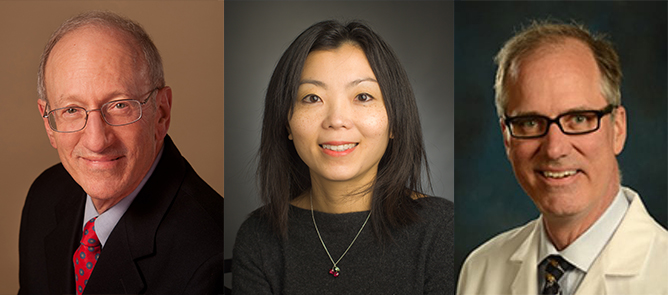Walking-Around Knowledge in Radiation Oncology: How We Got There, and Where It is Going
by Paul E. Wallner, DO, FASTRO, Associate Executive Director for Radiation Oncology; Andrea K. Ng, MD, MPH, ABR Trustee; and Jeff M. Michalski, MD, MBA
2020;13(6):8
The Radiation Oncology (RO) ABR Online Longitudinal Assessment (ABR OLA) Part 3 Maintenance of Certification (MOC) instrument was conceptualized in 2016 to replace the previously deployed computer-based assessment test that had been administered every 10 years. Development of the product proceeded along two parallel pathways: an internal ABR team worked on creating the software platform to support the program, while members of the eight RO clinical category committees repurposed existing MOC items (questions) sufficient to enable rollout of the assessment tool in January 2020. To allow weekly random distribution of two items to more than 3,000 participating diplomates, more than 200 items had to be available on Day 1 of program implementation. Early in the process of item development, the RO trustees addressed critical issues of breadth and depth of item distribution, and whether there should be an initial attempt to provide diplomates with practice-specific item options.
The ABR awarded its final non-time-limited (i.e., “lifetime”) initial certificates in 1995, so some of the diplomates participating in MOC have been in practice for 25 years or more. Some limit their practices to a single or limited number of disease sites. Because of the large number of items that would be required to enable diplomate item site preferences, and the lack of ACGME-accredited fellowships and/or subspecialty certification in RO, we decided initially to have all participants receive the entire spectrum of discipline-related items. The level of depth of those items was determined to be the somewhat difficult-to-define concept of walking-around knowledge.
To develop these new items, the ABR RO trustees empaneled a group of early to mid-career volunteers whose practices were focused on general RO. The new OLA committee was chaired by a trustee (AKN) with a senior volunteer vice-chair (JMM). Walking-around knowledge was loosely defined as the base of oncology-related information that should be immediately knowable to a clinically active RO, regardless of their years in practice, site of practice, or personal disease sites of interest. Items would continue to be distributed randomly, based on blueprints related to disease site incidence in the general population and RO practice, and would include all aspects of clinical oncology care and nonclinical knowledge, such as biostatistics, bioethics, and patient safety.
A six-month analysis of more than 200,000 answered RO items, with more than 2,000 comments, was recently completed.1 This review suggests that diplomates are generally pleased with the OLA instrument, but favor greater ability to select focused topics. As the OLA platform is refined in future iterations, and additional RO items are added to the available inventory, the potential for partial practice-related item selection will be carefully considered.
References:
- Wallner, PE, Segal, S, Laszakovits, DJ, et al. The American Board of Radiology online longitudinal assessment Part 3 maintenance of certification instrument: rationale and summary of 6-month experience. Pract Radiat Oncol. 2020;10(6):386-388. https://doi.org/10.1016/j.prro.2020.07.009



